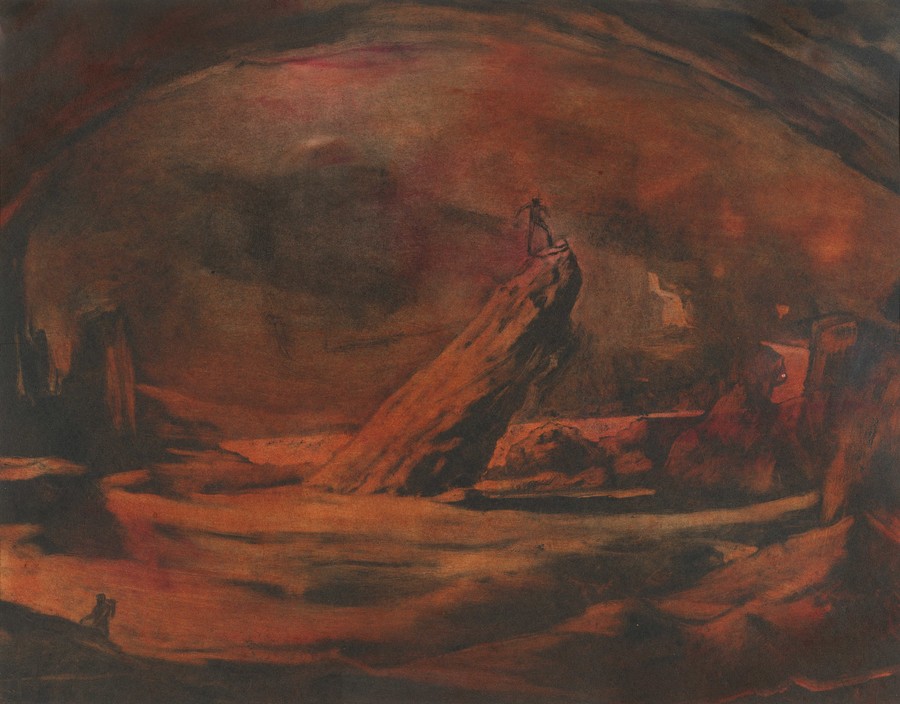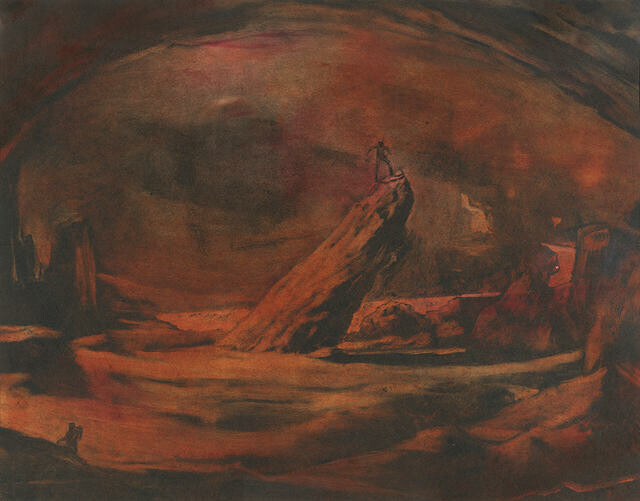Jason Greig's Vulcan Paradise

Jason Greig Vulcan Paradise 1998. Monoprint. Collection of Christchurch Art Gallery Te Puna o Waiwhetū, purchased 1998
I’ve had a quiet fascination with Jason Greig’s work ever since I was a Year 13 student hanging about Burnside High’s art block (which, granted, wasn’t that long ago). My then printmaking teacher, Nichola Shanley, is a good friend of Jason’s and managed to get him along to one of our classes.
At the time, artists were people I researched in books. They were almost like fairytale heroes or Hollywood actors to me; people you read about but never encountered in real life. Jason was the first artist that I met and had the pleasure of watching work. I have distinct memories of our entire class being in awe of him, and him paying very little heed to our stunned silence.
Jason took us through his monoprinting process, explaining his preference for Formica plates (which Nichola kindly sourced for us to experiment with) and how to properly ink-up your plate with a roller. He demonstrated how he uses cotton buds to lighten the load of the ink (you can see this in the delicate variations in tone of Vulcan Paradise), and slightly damp paint brushes to create sharp lines where the background (red in this instance) will show clearest. Best of all, he spoke of his tendency to blast heavy metal through the studio. He did this all while working away at the print in front of him, throwing swear words around as he went (quite shocking for a bunch of awkward 17 year-olds).
One comment that he made, which left quite an impression on me, was that he never throws anything away. If it isn’t working for you, then put it in a drawer and start on something else; come back to that piece the next day, in a week, or three years down the track. Often a fresh perspective is all you need. I now follow this logic if I’m halfway through a painting (or essay!) and I’m really struggling with it; it taught me that anything halfway done is never going to perform how you want it to, simply because it isn’t finished yet.
When the class was coming to an end and Jason had finished talking us through his process, he held up his plate and all of our jaws dropped to the floor at the delicate portrait he had whipped up. I wish I could remember the exact words, but his response was something along the lines of “Oh, stop staring at it would you!”
Vulcan Paradise reminds me of that workshop, and of casting off into the artworld and realising that it is a place that one is free to simply be oneself. His practice had a strong influence on my submissions that year. I think fondly of him for his rough-as-guts teachings, and of Nichola too, who was an incredible support to all of us hopeful artists in that room.











